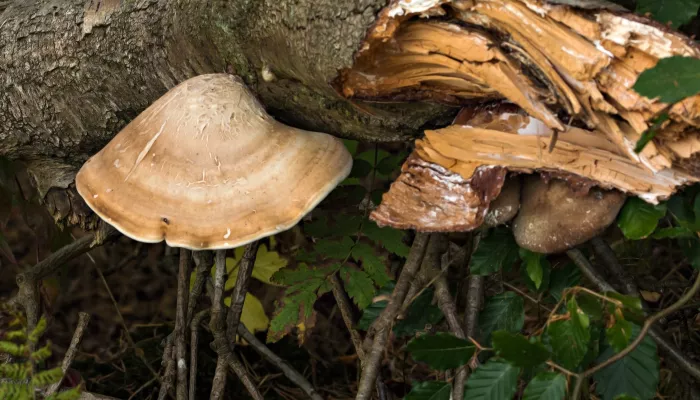| Statistics | |
|---|---|
| Cap diameter: | 10cm - 20cm |
The birch polypore only grows on Birch trees. This leathery bracket fungus has a rounded, coffee-coloured cap that was once used for sharpening tools, hence its other name: the 'Razorstrop fungus'.
About
The birch polypore is, as its name suggests, a bracket fungus that only grows on Birch trees. It is rounded, smooth and leathery, and white or pale brown. It can be seen all year-round. Fungi belong to their own kingdom and get their nutrients and energy from organic matter, rather than photosynthesis like plants. It is often just the fruiting bodies, or 'mushrooms', that are visible to us, arising from an unseen network of tiny filaments called 'hyphae'. These fruiting bodies produce spores for reproduction, although fungi can also reproduce asexually by fragmentation.
How to identify
The birch polypore is a fleshy fungus that is round or hoof-shaped, with a rounded edge and leathery look. It is a milky coffee-colour on top, and has white pores underneath. It has a strong, fungusy smell.
Did you know?
The birch polypore is also known as the 'Razorstrop fungus' because its rubbery, leather-like surface was once used to sharpen knives and razors.
How people can help
Fungi play an important role within our ecosystems, helping to recycle nutrients from dead or decaying organic matter, and providing food and shelter for different animals. The Wildlife Trusts manage many nature reserves sympathetically for the benefit of all kinds of wildlife, including fungi: you can help by supporting your local Trust and becoming a member. Our gardens are also a vital resource for wildlife, providing corridors of green space between open countryside. Try leaving log piles and dead wood to help fungi and the wildlife that depends on it. To find out more about encouraging wildlife into your garden, visit our Wild About Gardens website: a joint initiative with the RHS.

